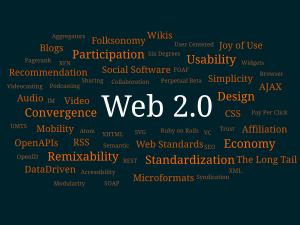
Image via Wikipedia
Last week Google released Google Buzz, a social network integrated with Gmail, tapping into the already existing social graph of the users. As expected the tech blogosphere went through wild emotions from overtly positive reaction with amazement to criticisms about their perceived privacy flaws. I was waiting for the hysteria to die down before I offer my thoughts on the product and GoogleŌĆÖs strategy.
Google has long been criticized as being clueless on their social strategy. In my opinion, Google is well aware of what it wants to do in the social space and are slowly laying the necessary foundation. Forget Orkut, Google is not even serious about such walled garden type of approach. Google is out to build something grander, mimicking the very nature of the underlying internet platform. Their approach to social is more open and distributed than other major social networking sites. Facebook may have more than 400 million users but it doesnŌĆÖt mimic the kind of diverse world we live in. An online social network can never mimic our real life social network with a walled garden approach. Period. Let us take a step back and dig a bit deeper on this topic and what Google might be trying to do.
In real life, we socialize in many different environments starting with socializing inside our homes to socializing in coffee shops to socializing in the bars to book clubs to, even, socializing while lying down on the beds of the emergency rooms. We take a compartmentalized approach to our social life. As we move from a more grounded world to the web based world, the various social tools we use on the internet platform must mimic the nature of interactions we have in the real life. In the real life, I go to a local book club to talk about a book of my interest, hit a sports bar with friends to watch Superbowl, etc.. I go to different places for different interests. I meet with different sets of people for each of my interests. I am free to take one of my friends from one group, say book club, to another networking group as I please as long as my friend is ok with it. So, any online social network should allow me to have the same kind of social interaction. In real world, I donŌĆÖt go to the same club house for all of my social activities. Similarly, my social network on the web should be open and distributed without being held inside the walled gardens of any single social network. Any attempt to shut my social life inside the walled gardens goes against my liberty and I call it the big brother approach.
Having made my thoughts on the nature of online social interactions clear, let us take a look at how Google is approaching the problem. Even though Google went along with Orkut earlier, I always felt that they were not serious about taking it to the next level. Their announcement about OpenSocial gave some hints on their social strategy. Instead of trying to keep users inside their properties, Google is letting them socialize on whatever web app they are comfortable with already while giving them a platform to manage their social graph. Google has also introduced social features into many of their web properties individually. For example, I can socialize with a group of people inside Google Reader and another group inside Picasaweb. In short, Google is letting me socialize in whatever place (app) I want with whoever I want just like I do in the real world. I am not restricted inside GoogleŌĆÖs properties alone and I can do this on any third party services supporting OpenSocial. Thus, Google is taking a distributed path to social.
With Google Buzz, they are trying to add a social layer with real time updates inside Gmail. With this move, they are trying to achieve the following
- Bringing real-time social conversation inside the Gmail
- Keep Gmail relevant even even as email fades in this world of tweets and other social networking based messages
- More importantly, prepare Gmail as a dashboard for various distributed social properties
Eventually, Google can tie up all the different services, their own properties and other OpenSocial applications, inside Gmail giving an unified interface for the users. It is important to understand the difference between this approach of Google and the Facebook approach. While Facebook wants all the players to dance on their platform, thereby keeping them inside the walled garden, Google wants to let users dance wherever they want as long as they come back to sleep on GoogleŌĆÖs properties. By doing this, Google is letting us have the same kind of social experience as we have in the real life and, at the same time, keep control over our online activities.
Google Buzz is just a beginning and it may not even be their main social strategy. They are taking a distributed approach to social with the hope that one day they can tie it all together without drastically disrupting the user experience. The main advantages in their strategy are the distributed approach to social and the promise to be open (with a huge emphasis on data liberation). Essentially, in my opinion, we havenŌĆÖt really seen the core of GoogleŌĆÖs social strategy yet and, as Google usually does, they are slowly going to make us embrace their tools to manage our online social interactions. As I have told many times, GoogleŌĆÖs main goal is to collect all of the worldŌĆÖs information. They donŌĆÖt want to do it by forcing users to do everything on their properties. They clearly understand that it will not work for a goal like theirs. Instead, they are letting us do whatever we want at whatever place we want and, by keeping a control over our social graph, they are accumulating the wealth of information they set out to collect. In my opinion, this is GoogleŌĆÖs strategy and they are executing it very well (whether it is good or bad is entirely a different topic).







